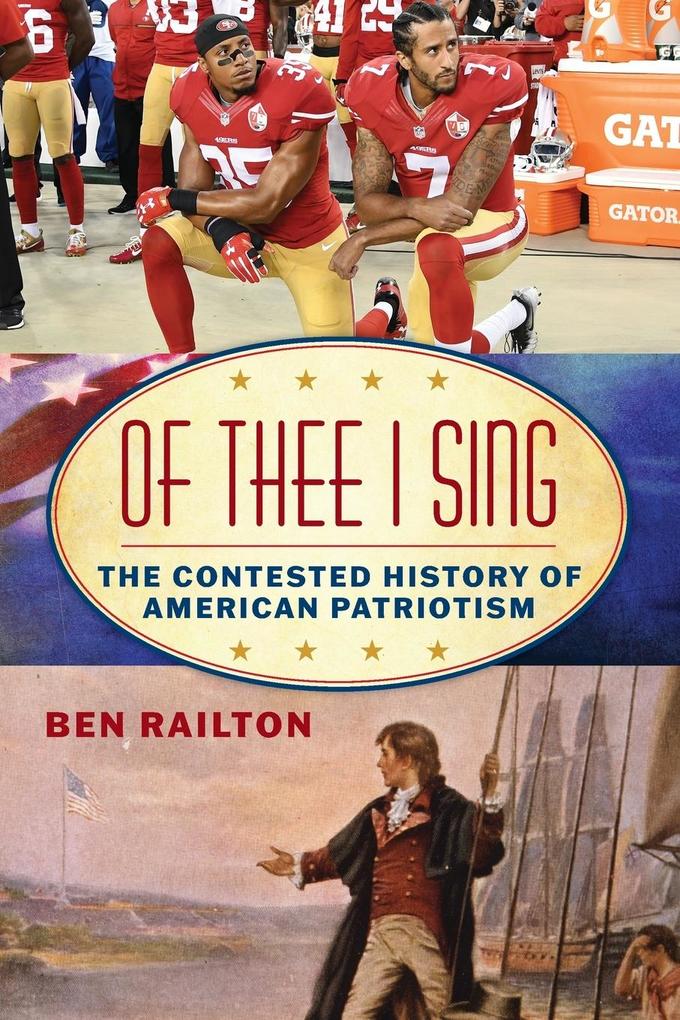
Zustellung: Fr, 16.05. - Di, 20.05.
Versand in 6 Tagen
VersandkostenfreiBestellen & in Filiale abholen:
When we talk about patriotism in America, we tend to mean one form: the version captured in shared celebrations like the national anthem and the Pledge of Allegiance. But as Ben Railton argues, that celebratory patriotism is just one of four distinct forms: celebratory, the communal expression of an idealized America; mythic, the creation of national myths that exclude certain communities; active, acts of service and sacrifice for the nation; and critical, arguments for how the nation has fallen short of its ideals that seek to move us toward that more perfect union.
In Of Thee I Sing, Railton defines those four forms of American patriotism, using the four verses of "America the Beautiful" as examples of each type, and traces them across our histories. Doing so allows us to reframe seemingly familiar histories such as the Revolution, the Civil War, and the Greatest Generation, as well as texts such as the national anthem and the Pledge of Allegiance. And it helps us rediscover forgotten histories and figures, from Revolutionary War Loyalists and the World War I Espionage and Sedition Acts to active patriots like Civil War nurse Susie King Taylor and the suffragist Silent Sentinels to critical patriotic authors like William Apess and James Baldwin.
Tracing the contested history of American patriotism also helps us better understand many of our 21st century debates: from Donald Trump's divisive deployment of celebratory and mythic forms of patriotism to the backlash to the critical patriotisms expressed by Colin Kaepernick and the 1619 Project. Only by engaging with the multiple forms of American patriotism, past and present, can we begin to move forward toward a more perfect union that we all can celebrate.
In Of Thee I Sing, Railton defines those four forms of American patriotism, using the four verses of "America the Beautiful" as examples of each type, and traces them across our histories. Doing so allows us to reframe seemingly familiar histories such as the Revolution, the Civil War, and the Greatest Generation, as well as texts such as the national anthem and the Pledge of Allegiance. And it helps us rediscover forgotten histories and figures, from Revolutionary War Loyalists and the World War I Espionage and Sedition Acts to active patriots like Civil War nurse Susie King Taylor and the suffragist Silent Sentinels to critical patriotic authors like William Apess and James Baldwin.
Tracing the contested history of American patriotism also helps us better understand many of our 21st century debates: from Donald Trump's divisive deployment of celebratory and mythic forms of patriotism to the backlash to the critical patriotisms expressed by Colin Kaepernick and the 1619 Project. Only by engaging with the multiple forms of American patriotism, past and present, can we begin to move forward toward a more perfect union that we all can celebrate.
Inhaltsverzeichnis
Acknowledgments
Introduction: Competing Visions of Patriotism
Chapter 1: The Revolution: Declaring and Constituting a Nation
Chapter 2: The Early Republic: Young, Expanding, and Divided
Chapter 3: The Civil War: Testing Whether the Nation Could Endure
Chapter 4: The Gilded Age: Wealth, Empire, and Resistance
Chapter 5: The Progressive Era: From Roosevelt and Reform to World War
Chapter 6: The Depression and World War II: Beyond the Greatest Generation
Chapter 7: The 1960s: Love It, Leave It, or Change It
Chapter 8: The 1980s: Morning and Mourning in America
Conclusion: Patriotism in the Age of Trump
A Note on Sources
Introduction: Competing Visions of Patriotism
Chapter 1: The Revolution: Declaring and Constituting a Nation
Chapter 2: The Early Republic: Young, Expanding, and Divided
Chapter 3: The Civil War: Testing Whether the Nation Could Endure
Chapter 4: The Gilded Age: Wealth, Empire, and Resistance
Chapter 5: The Progressive Era: From Roosevelt and Reform to World War
Chapter 6: The Depression and World War II: Beyond the Greatest Generation
Chapter 7: The 1960s: Love It, Leave It, or Change It
Chapter 8: The 1980s: Morning and Mourning in America
Conclusion: Patriotism in the Age of Trump
A Note on Sources
Produktdetails
Erscheinungsdatum
15. August 2024
Sprache
englisch
Seitenanzahl
216
Autor/Autorin
Benjamin Railton
Verlag/Hersteller
Produktart
kartoniert
Gewicht
358 g
Größe (L/B/H)
229/152/13 mm
ISBN
9781538199916
Entdecken Sie mehr
Bewertungen
0 Bewertungen
Es wurden noch keine Bewertungen abgegeben. Schreiben Sie die erste Bewertung zu "Of Thee I Sing" und helfen Sie damit anderen bei der Kaufentscheidung.










